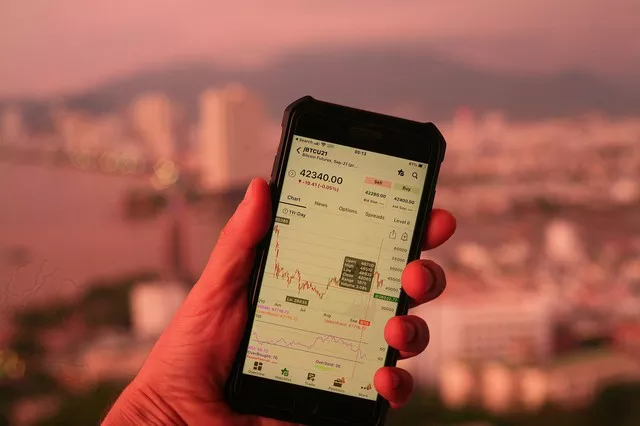The Chicago Mercantile Exchange (CME) stands as a cornerstone of the global financial landscape, renowned for its role in facilitating futures trading across a wide range of asset classes. With a rich history dating back to the 19th century, CME has evolved into a premier marketplace where market participants come together to buy and sell futures contracts, hedging risks, and seeking opportunities for profit. This article aims to provide a comprehensive understanding of CME’s status as a futures exchange, exploring its history, structure, and significance in the financial industry.
A Legacy of Innovation: The Origins of CME
The roots of CME can be traced back to the mid-19th century when a group of Chicago businessmen established the Chicago Butter and Egg Board in 1856. This pioneering exchange laid the groundwork for what would later become the Chicago Mercantile Exchange, playing a crucial role in standardizing trading practices for agricultural commodities.
Over the years, CME expanded its offerings to include a diverse array of futures contracts, ranging from agricultural products like corn and wheat to financial instruments such as stock index futures and interest rate derivatives. This legacy of innovation and adaptability cemented CME’s reputation as a leading futures exchange, attracting participants from around the globe seeking exposure to various asset classes.
Futures Contracts: The Core Offering of CME
At its core, CME is synonymous with futures contracts, which serve as the primary instruments traded on its exchange. Futures contracts are standardized agreements to buy or sell a specified asset at a predetermined price on a future date. These contracts enable market participants to hedge against price fluctuations, speculate on market movements, and manage risk exposure in a variety of markets.
CME offers a diverse range of futures contracts across different asset classes, including commodities, currencies, interest rates, and stock indices. Each futures contract traded on CME adheres to specific terms and specifications, providing a transparent and efficient marketplace for buyers and sellers to engage in trading activities.
See Also: What is overnight in futures?
Market Structure: The Architecture of CME
CME operates as a centralized marketplace where buyers and sellers come together to trade futures contracts. The exchange provides the infrastructure and technology necessary for efficient order matching, price discovery, and trade execution. Market participants access CME’s trading platform through licensed brokers or electronic trading platforms, allowing for seamless connectivity and accessibility.
CME’s market structure is designed to promote liquidity, transparency, and fairness. Market participants benefit from a competitive environment where prices are determined through the continuous interaction of buyers and sellers. CME employs sophisticated surveillance and risk management systems to ensure the integrity of its markets and protect against fraudulent activities or market manipulation.
Regulatory Oversight: Upholding Market Integrity
As a regulated exchange, CME is subject to oversight by regulatory authorities to ensure compliance with applicable laws and regulations. The exchange operates under the supervision of the Commodity Futures Trading Commission (CFTC), which oversees the derivatives markets in the United States. CME’s adherence to regulatory standards helps uphold market integrity and instill confidence among market participants.
In addition to regulatory oversight, CME implements its own set of rules and procedures to govern trading activities on its exchange. These rules are designed to promote fair and orderly markets, prevent market abuse, and protect the interests of investors. CME’s commitment to maintaining a robust regulatory framework underscores its dedication to fostering trust and transparency in its markets.
Global Reach: Connecting Market Participants Worldwide
CME’s influence extends far beyond its Chicago headquarters, with a global footprint that spans continents and time zones. The exchange operates electronic trading platforms that enable market participants from around the world to access its markets and trade futures contracts seamlessly. This global reach facilitates liquidity and price discovery, enhancing the efficiency of CME’s markets.
Market participants, including institutional investors, hedge funds, commodity producers, and trading firms, rely on CME’s global reach to access diverse trading opportunities and manage their risk exposure. CME’s status as a leading futures exchange positions it as a hub for international trading activities, attracting participants seeking exposure to global markets and asset classes.
Innovation and Adaptation: Embracing Change in the Digital Age
Innovation has been a driving force behind CME’s evolution, with the exchange continuously adapting to meet the changing needs of market participants. In recent years, CME has embraced technological advancements to enhance its trading infrastructure and expand its product offerings. The introduction of electronic trading platforms, algorithmic trading, and market data services has revolutionized the way futures contracts are traded and accessed.
CME has also been at the forefront of introducing new futures contracts to address emerging market trends and investor demand. For example, the exchange offers futures contracts tied to cryptocurrency prices, reflecting the growing interest in digital assets among institutional investors and traders.
Conclusion
In conclusion, the Chicago Mercantile Exchange (CME) stands as a premier futures exchange, offering a diverse range of futures contracts across various asset classes. With a legacy of innovation, a robust market structure, and a commitment to regulatory compliance, CME serves as a trusted marketplace for market participants seeking exposure to global markets and managing risk exposure. As the financial landscape continues to evolve, CME remains at the forefront of driving innovation and adapting to meet the changing needs of market participants.


